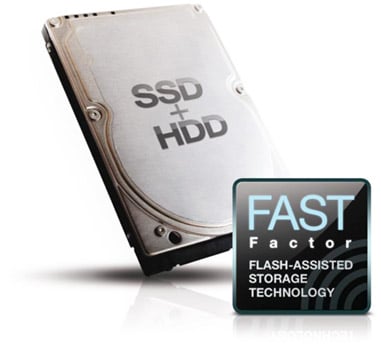Seagate Momentus XT 750GB Hybrid Drive
Introduction and Specifications
Seagate’s first Momentus XT hybrid drive arrived about a year and a half ago. The original drive featured a 500GB hard drive paired to 4GB of SLC NAND flash and a SATA 3.0 interface. At the time of its release, the original Momentus XT turned out to be a rather compelling product. Its price was relatively low and Seagate’s adaptive memory technology “just worked”, which resulted in increased performance that was seamless to the end-user, regardless of the OS being used.
Today Seagate is ready to reveal its next iteration of the Momentus XT. The updated version of the drive we’ll be showing you here today features a 750GB storage capacity, with 8GB of SLC NAND flash, and a faster SATA 6.0Gbps interface. Much of the underlying technology is similar, but this new drive has more magnetic storage, more flash memory, a speedier interface, and its adaptive memory algorithms and hybrid data management tools--dubbed Fast Factor--have been tweaked for better real-world performance versus the original. Full specifications are below, with a performance profile to follow...
|

The Seagate Momentus XT 750GB Drive
Although Seagate hasn’t revealed all of the secret-sauce that makes the Momentus XT unique in the current market, understanding how the drive works is fairly straightforward. The 8GB of SLC NAND flash is used as a high-speed repository of sorts. The controller on the Momentus XT monitors usage patterns and copies the most frequently accessed bits of data from the hard drive to the solid state storage. And it all happens independent of the OS or drivers. According to Seagate, the data on the hard drives has to be accessed multiple times before it is copied to the solid state storage and the contents of the flash memory will dynamically and constantly change over time, based on usage. To put it simply, the most commonly accessed data on the platters gets copied to the much higher performing, SLC Flash memory, which results in a performance boost. And it’s not necessarily full files being copied, but rather the most frequently accessed bits of data. We should also point out that a new feature to the updated Momentus XT called Fast Boot uses a small portion of the solid state cache for data used during the boot process, which resides in a special location and won't change often, in order to maintain quick boot times.
Knowing how the adaptive memory on the Momentus XT works, reveals one of the drawbacks of a hybrid design such as this one—the flash memory will offer no performance benefit to infrequently accessed or new data. So, with large file copies, application installations, and the like, the Momentus XT will perform like a standard HD.







